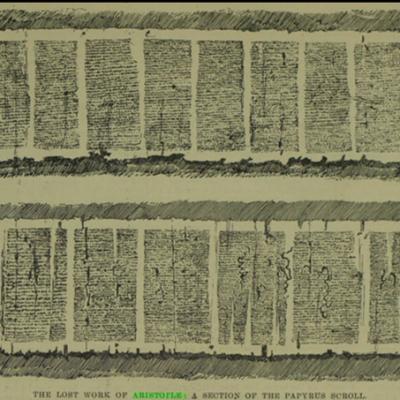Aristotle's Illustrated Papyrus

Admire the careful drawing of manuscript of the Athenaiōn Politeia (Constitution of Athens) reproduced in the popular periodical Illustrated London News on January 31st 1891 to inform the public that Frederic G. Kenyon’s first edition was about to be published.
Two leaves of a papyrus codex had been published in 1880, but a much longer text was bought in Egypt in 1890 and acquired by E. A. Wallis Budge of the British Museum.
The ILN knew that most of its readers would not know what a papyrus was, and so took the opportunity to invite Richard Garnett, Keeper of Printed Books at the Museum, to explain.
“The spectacle is calculated to arouse reflection on the resources of the ancient world in writing material, and the degree in which its civilisation was affected by it”.
Sadly, Garnett turned the opportunity into an excuse for a racist denunciation of the Egyptian national character:
“In Egypt alone the climate allows the preservation of a papyrus scroll, and if the gift at first seemed wasted on a nation so generally unlettered, the wisdom of Providence was vindicated when this ancient and unprogressive land eventually became a home of Greek culture. How little, from sheer material obstacles, Greece could have effected without Egypt is evinced by the fact that, upon becoming acquainted with papyrus…the only writing material, wood and stone excepted, of which up to that period they had a notion.”




